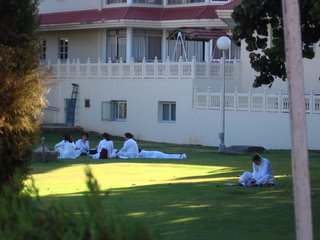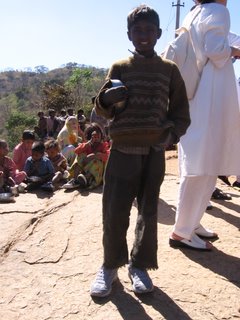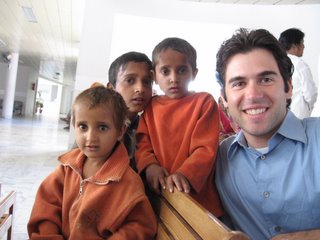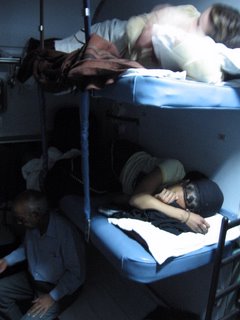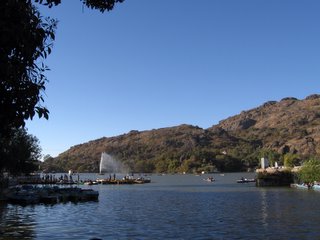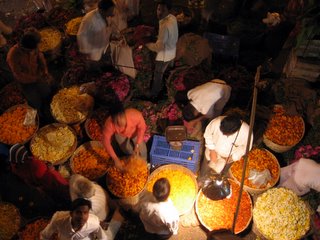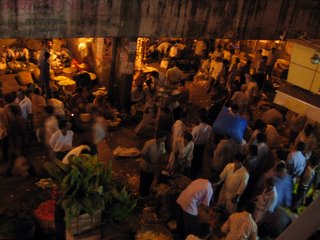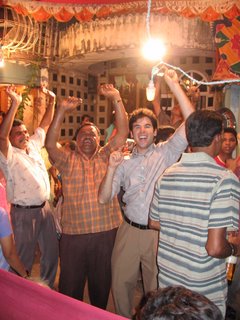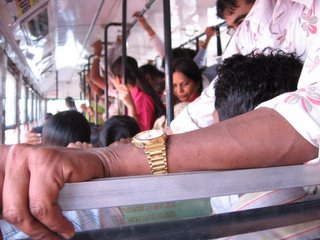
My Sundays fill up with peaceful content as the bus begins to swell with passengers. The ride from Calina to New Bombay is about forty-five minutes with breaks of speed and speedy braking. The intermittent bumps cause people to jump simultaneously out of their seats while those standing in the aisle hold on for the ride. At only fifteen rupees this is the working class mass transit. Businessmen with their shoulder bags and women returning from haggling at the market travel with relative comfort and speed. The size of the crowd varies as much as the velocity and makes my fare a raffle ticket for a seat.
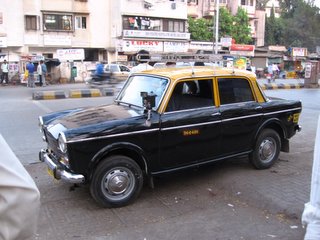 For about ten times the price I can sit inside a taxi and be guaranteed nice seats but not necessarily speedy arrival. The chauffeurs are notorious for their back road shortcuts that get me no closer to my destination. In a city where the cement and cinderblock buildings all look the same, and the man in the hat with a goat is on every corner, the lack of road signs, stoplights and painted street lanes cause the arteries and veins of this city to carry the pulse of people in crazy patterns. In this chaos the black and yellow cars cruise around to carry those with enough money to the far flung corners of the city.
For about ten times the price I can sit inside a taxi and be guaranteed nice seats but not necessarily speedy arrival. The chauffeurs are notorious for their back road shortcuts that get me no closer to my destination. In a city where the cement and cinderblock buildings all look the same, and the man in the hat with a goat is on every corner, the lack of road signs, stoplights and painted street lanes cause the arteries and veins of this city to carry the pulse of people in crazy patterns. In this chaos the black and yellow cars cruise around to carry those with enough money to the far flung corners of the city.If you want a direct route then train is the way to go. After the train leaves the terminal it doesn’t slow for
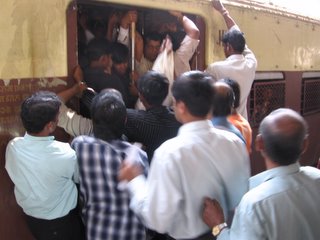 anyone and with the tracks stitching the city together like Frankenstein, almost every community has a station nearby. Adventurous young men stand at the doorless entry to find escape from the oppressive smell of packed human by letting the hot air blast their face as the cityscape and oncoming trains race by. In order to get inside the mobile crowd you have to push and be pushed by others, and once you’re on you get pushed some more. The guy whose face is in your chest asks what stop you get off and if it’s after his than he pushes his way past, to climb over someone else, to squeeze between two more guys just to be close enough to the door to pop out during the next rush. Ladies don’t have this problem. They have separate cars. There are even first class cars
anyone and with the tracks stitching the city together like Frankenstein, almost every community has a station nearby. Adventurous young men stand at the doorless entry to find escape from the oppressive smell of packed human by letting the hot air blast their face as the cityscape and oncoming trains race by. In order to get inside the mobile crowd you have to push and be pushed by others, and once you’re on you get pushed some more. The guy whose face is in your chest asks what stop you get off and if it’s after his than he pushes his way past, to climb over someone else, to squeeze between two more guys just to be close enough to the door to pop out during the next rush. Ladies don’t have this problem. They have separate cars. There are even first class cars 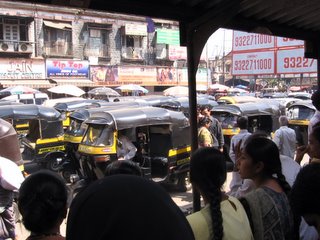 for anyone willing to pay a higher price to have a quarter-inch seat cushion and a quarter the crowd.
for anyone willing to pay a higher price to have a quarter-inch seat cushion and a quarter the crowd.All other methods of movement pale in comparison to the autorickshaw. May the man that invented this mechanical menace have a special place in the heavens. This lawnmower with a canopy and a backseat is my favorite tool of tumultuous transportation. Rickshaw drivers have a worse sense of direction than taxi drivers but a bigger thirst for speed. Limited by the strength of their two-stroke engines, they compensate by sheer tenacity and guts. As the smallest of vehicles, the autorickshaw can weave between the cracks of traffic. Cheap and ubiquitous, it takes the cake and leaves its contenders in the dust. Since it has no seatbelts and no doors, it’s perfect for playing tag or for cramming seven people for a ride.
